Cameroon, often referred to as “Africa in miniature,” is a country that boasts diverse cultures, languages, and landscapes. Located in Central Africa, it is bordered by Nigeria to the west, Chad to the north, the Central African Republic to the east, and Equatorial Guinea and Gabon to the south, with a coastline along the Atlantic Ocean.
This diverse nation offers a unique blend of ethnic groups, natural beauty, and vibrant traditions, making it a fascinating destination for travelers seeking cultural richness and adventure.
Table of Contents
Geography
Cameroon covers an area of approximately 475,442 square kilometers, making it the 53rd largest country in the world. The country’s geography is remarkably diverse, ranging from coastal plains and savannas to dense forests and mountainous regions. The Adamawa Plateau, located in the center of the country, is known for its highlands, while the Western Highlands feature the majestic Mount Cameroon, an active volcano and the highest peak in West Africa, rising to 4,095 meters.
Cameroon is also home to Lake Chad, one of the largest lakes in Africa, which serves as a crucial water source for both people and wildlife. The variety of ecosystems in Cameroon contributes to its rich biodiversity, making it a haven for nature lovers and wildlife enthusiasts. The coastal region is characterized by beautiful beaches and fertile plains, where agriculture flourishes. In contrast, the northern regions are arid, featuring savanna landscapes that are home to unique wildlife.
The diverse climates across the country create an array of habitats, supporting various flora and fauna. This geographical diversity also influences the lifestyle and livelihoods of the people, as different regions specialize in agriculture, fishing, and trade.
States of Cameroon
Cameroon is divided into 10 administrative regions, not states. Each region is further divided into divisions and subdivisions. Here is the table listing the 10 regions of Cameroon along with their respective capitals:
| No. | Region | Capital |
|---|---|---|
| 1 | Adamawa | Ngaoundéré |
| 2 | Centre | Yaoundé |
| 3 | East | Bertoua |
| 4 | Far North | Maroua |
| 5 | Littoral | Douala |
| 6 | North | Garoua |
| 7 | North West | Bamenda |
| 8 | South | Ebolowa |
| 9 | South West | Buea |
| 10 | West | Bafoussam |
History
Cameroon’s history is marked by its diverse ethnic groups, colonial past, and struggles for independence. The area now known as Cameroon has been inhabited for thousands of years, with various indigenous tribes, such as the Fulani, Bantu, and Kirdi, contributing to its rich cultural heritage. In the late 19th century, Cameroon was colonized by Germany, which established a plantation economy based on cocoa, rubber, and palm oil.
The impact of colonial rule led to significant changes in the social and economic structures of the region, often disrupting traditional ways of life. After World War I, Cameroon was divided between the British and the French, with the French controlling the majority of the territory. The struggle for independence grew during the mid-20th century, fueled by nationalist movements seeking self-determination.
Cameroon finally gained independence from France on January 1, 1960, and from Britain on October 1, 1961, leading to the establishment of a united republic. This period marked a significant turning point in Cameroon’s history, as the newly independent nation faced the challenges of nation-building and governance. In the years following independence, Cameroon faced political challenges, including the consolidation of power by President Ahmadou Ahidjo, who ruled from 1960 to 1982. His regime was characterized by a strong central government, suppressing dissent and promoting a one-party state.
The country underwent significant political and economic changes, with Paul Biya succeeding Ahidjo and continuing to lead Cameroon, making it one of Africa’s longest-serving leaders. The modern history of Cameroon is characterized by ongoing efforts to address regional disparities, political tensions, and social issues, including calls for greater autonomy in the Anglophone regions.
Top Ten Must-Visit Destinations
1. Mount Cameroon
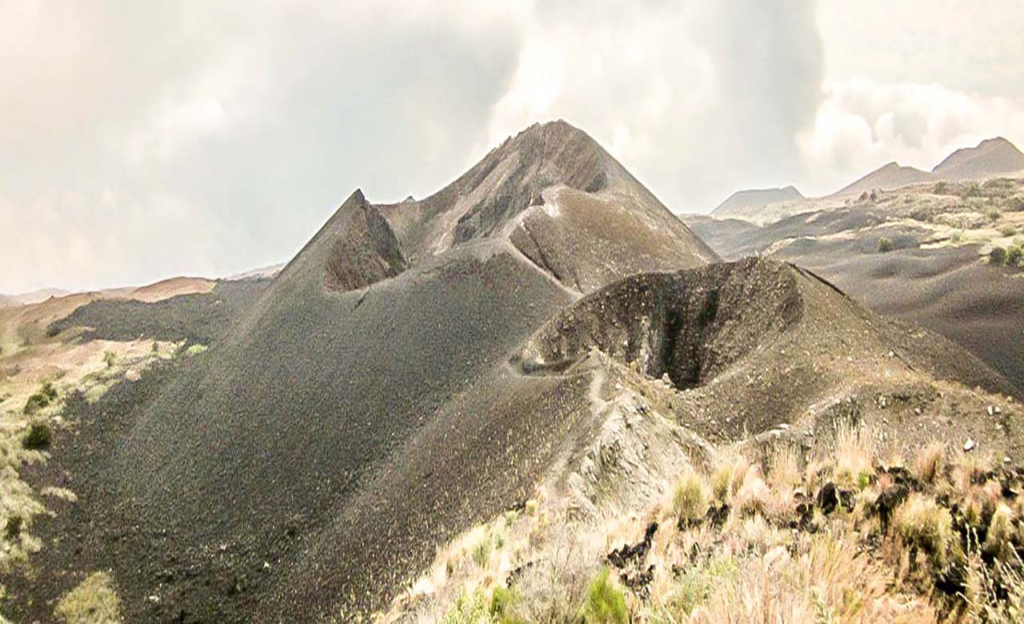
Mount Cameroon, the highest peak in West Africa, is an active volcano that rises to 4,095 meters above sea level. It is a popular destination for hiking and offers stunning views of the surrounding landscapes and the Atlantic Ocean. The annual Mount Cameroon Race of Hope attracts athletes from around the world, showcasing the region’s natural beauty and outdoor adventure opportunities. Hiking the trails of Mount Cameroon provides a chance to experience its unique biodiversity, including endemic species and lush vegetation.
2. Yaoundé
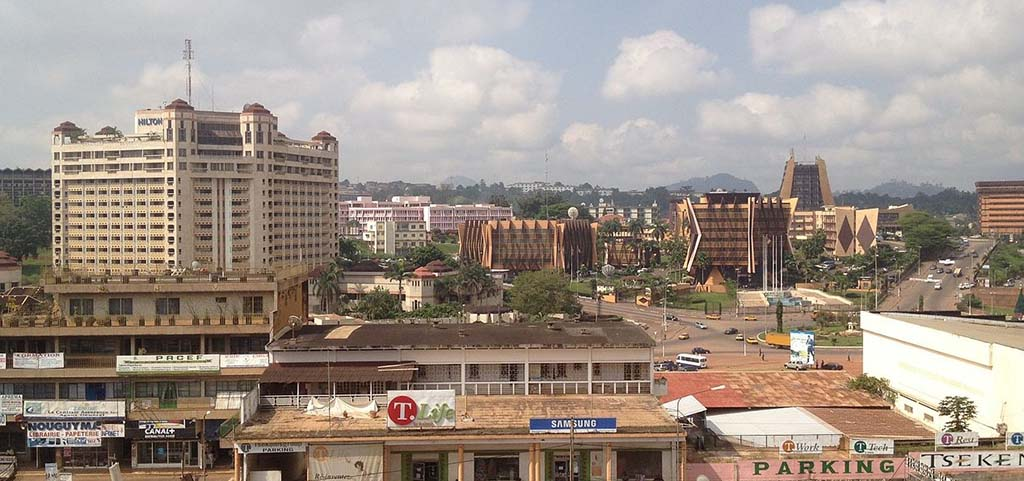
Yaoundé, the political capital of Cameroon, is a bustling city that blends modernity with tradition. Visitors can explore the National Museum, which showcases the country’s rich cultural heritage, and the impressive Basilica of Saint Paul. The city is also home to vibrant markets, local eateries, and parks, providing a glimpse into everyday Cameroonian life. The lively atmosphere and friendly locals make Yaoundé a great place to immerse oneself in the culture and history of the country.
3. Douala
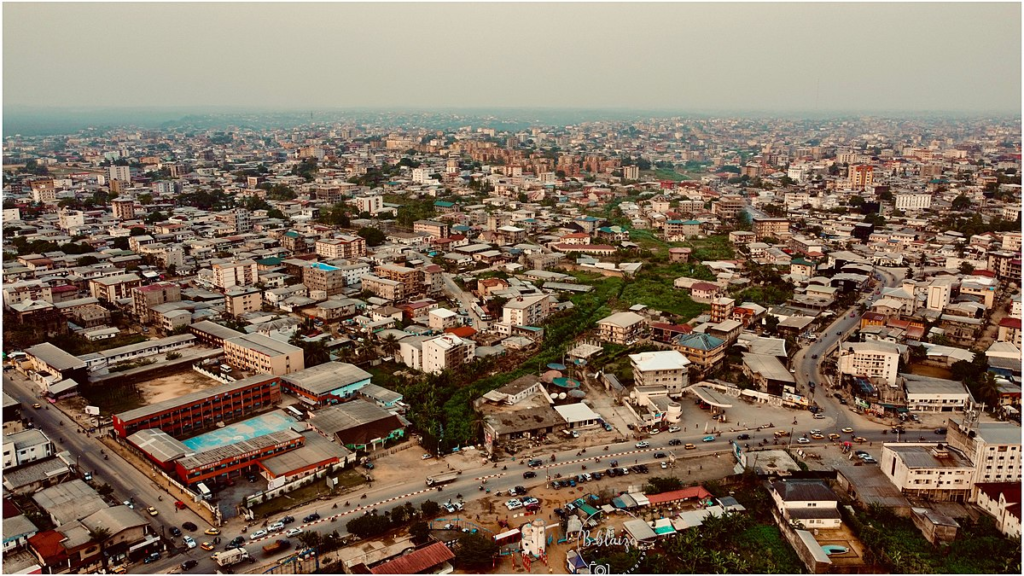
Douala is the largest city in Cameroon and serves as the economic hub of the country. The city features a lively port, modern infrastructure, and a rich cultural scene. Visitors can explore the Douala Maritime Museum, stroll along the waterfront, and enjoy the vibrant nightlife. The nearby La Nouvelle Route des Pêches offers fresh seafood and local delicacies. Douala’s dynamic atmosphere and cultural diversity make it an exciting destination for travelers seeking a taste of urban life in Cameroon.
4. Limbe

Limbe, located on the southwestern coast, is known for its beautiful beaches and lush vegetation. The city is home to the Limbe Wildlife Centre, which rehabilitates and cares for orphaned primates. Visitors can enjoy the scenic beaches, explore the Botanical Garden, and take in views of Mount Cameroon, making it a perfect destination for nature lovers. Limbe’s relaxing atmosphere and diverse wildlife make it an ideal getaway for those looking to unwind and reconnect with nature.
5. Kribi
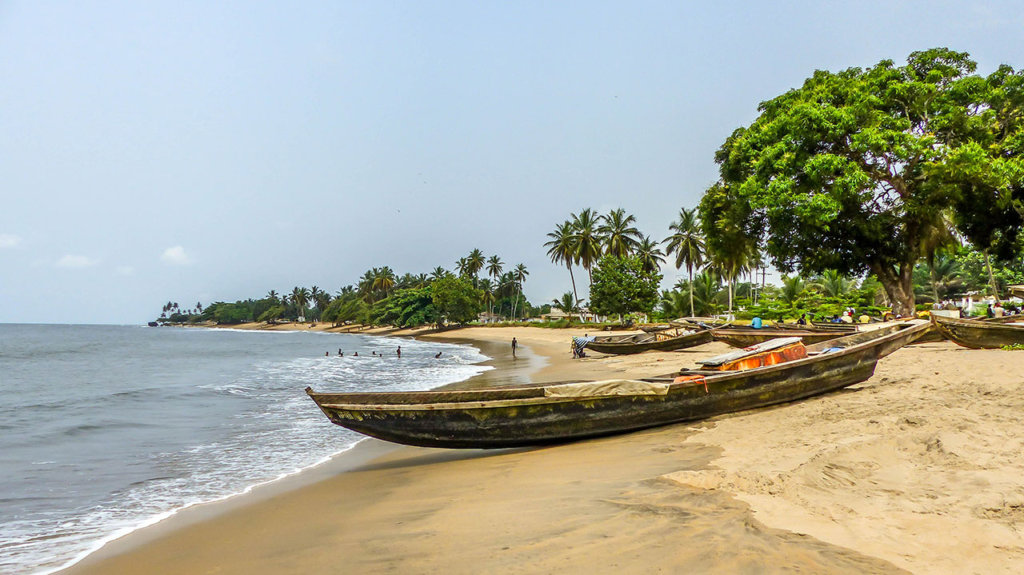
Kribi is a picturesque coastal town famous for its stunning beaches and lush rainforests. The town is known for its beautiful sandy shores, such as Plage de Lobé, where visitors can enjoy swimming, sunbathing, and water sports. Kribi is also home to the majestic Lobé Falls, where the river cascades directly into the ocean, providing a breathtaking natural spectacle. The combination of pristine beaches and lush landscapes makes Kribi a perfect destination for relaxation and adventure.
6. Dja Faunal Reserve
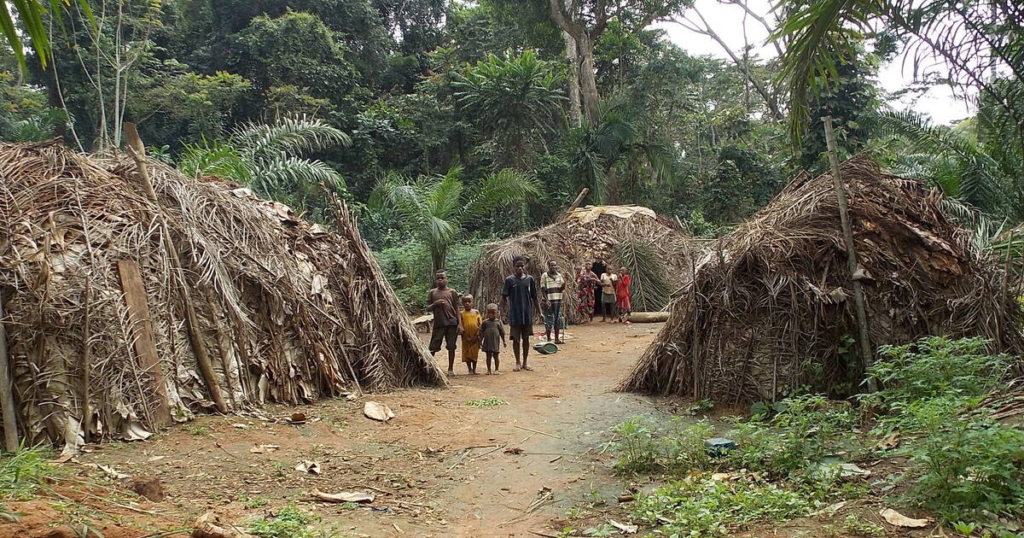
The Dja Faunal Reserve, a UNESCO World Heritage Site, is one of the largest and most biodiverse rainforests in Africa. The reserve is home to a variety of wildlife, including elephants, gorillas, and numerous bird species. Visitors can embark on guided tours to explore the lush jungle, learn about conservation efforts, and experience the unique flora and fauna of the region. The Dja Faunal Reserve is a haven for nature lovers and a key site for wildlife conservation in Cameroon.
7. Bafoussam

Bafoussam, located in the Western Highlands, is known for its vibrant cultural heritage and stunning landscapes. The city is the capital of the Western Region and serves as a center for the Bamileke culture. Visitors can explore local markets, experience traditional dance performances, and taste local dishes, making it a great destination for cultural immersion. Bafoussam’s rich traditions and lively atmosphere provide an authentic glimpse into the heart of Cameroon’s cultural diversity.
8. Foumban
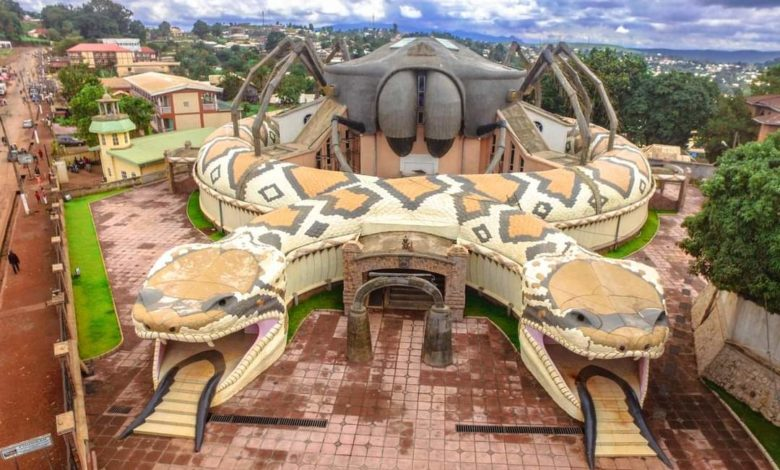
Foumban is a historic town known for its rich artistic and cultural traditions. The town is home to the Sultan’s Palace, a stunning example of traditional architecture, and the Museum of Art and Culture, which showcases local crafts and artifacts. Visitors can witness traditional ceremonies, visit local artisans, and immerse themselves in the unique culture of the Bamoun people. Foumban’s artistic heritage and historical significance make it a captivating destination for travelers interested in Cameroon’s cultural legacy.
9. Waza National Park
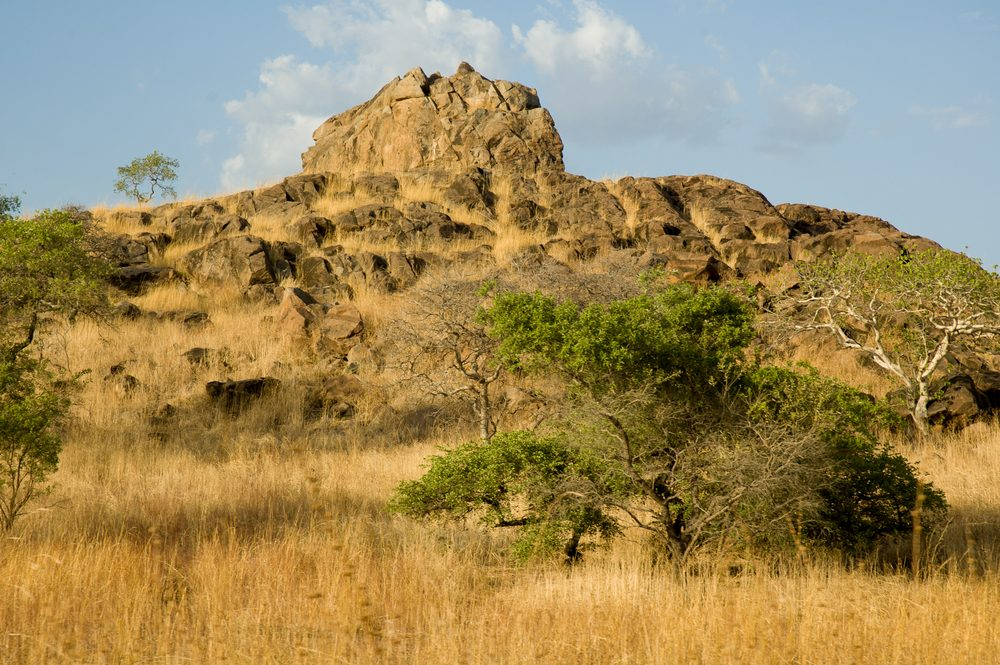
Waza National Park is one of Cameroon’s most famous wildlife reserves, known for its diverse flora and fauna. The park is home to elephants, lions, giraffes, and numerous bird species, making it a popular destination for wildlife enthusiasts. Visitors can embark on guided safaris to explore the park’s landscapes and spot its unique wildlife. The rich biodiversity and stunning landscapes of Waza National Park offer a thrilling experience for nature lovers and adventurers alike.
10. Ekom-Nkam Waterfalls
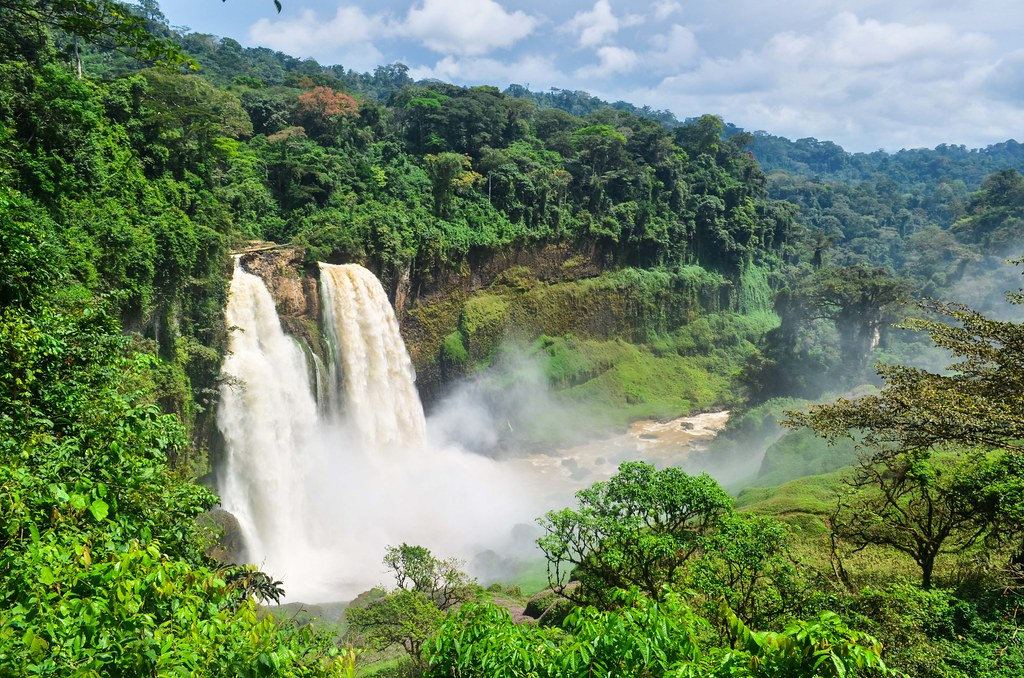
The Ekom-Nkam Waterfalls, located near the town of Limbe, are a breathtaking natural wonder. The falls cascade down a rocky cliff, creating a stunning spectacle surrounded by lush vegetation. Visitors can hike to the viewpoint for panoramic views of the falls and the surrounding rainforest, making it an ideal spot for nature lovers and photographers. The beauty of the Ekom-Nkam Waterfalls is a testament to Cameroon’s natural wonders and provides a peaceful escape into nature.
Culture
Cameroon is a cultural melting pot, home to over 250 ethnic groups, each with its own distinct traditions, languages, and customs. The country’s official languages are French and English, reflecting its colonial history. However, many indigenous languages are spoken, including Ewondo, Douala, and Fulfulde, contributing to the rich linguistic diversity.
This multilingual environment enhances the cultural fabric of the nation and fosters communication among its diverse populations. The traditional music and dance of Cameroon are integral to its cultural identity. Popular music genres, such as Makossa and Bikutsi, blend traditional rhythms with modern influences, creating vibrant sounds that resonate across the country.
Festivals and celebrations are common, showcasing traditional dances, costumes, and performances that reflect the unique heritage of different ethnic groups. Music plays a vital role in social gatherings, religious ceremonies, and cultural events, reinforcing community bonds and celebrating identity. Cameroon’s traditional cuisine is diverse and flavorful, influenced by its various regions. Staples include rice, cassava, yams, and plantains, often served with stews, grilled meats, and spicy sauces.
Dishes like ndolé (bitter leaf stew), poulet dg (chicken with plantains), and achu (pounded cocoyam) are popular among locals and visitors alike. The country’s culinary traditions are a reflection of its rich agricultural resources and cultural diversity, making it a delightful destination for food lovers.
Festivals
Cameroon hosts numerous festivals throughout the year, celebrating its rich cultural heritage and traditions. The Ngondo Festival, held by the Sawa people of the Littoral Region, is a vibrant celebration of culture, featuring traditional dances, rituals, and competitions.
Another significant festival is the Fête de la Musique, which showcases Cameroonian music and talents, bringing together artists and audiences from across the country. These festivals provide a glimpse into the vibrant cultural life of Cameroon, offering visitors an opportunity to engage with local customs and traditions.
Economy
Cameroon’s economy is diverse, with agriculture, industry, and services playing crucial roles. The country is rich in natural resources, including oil, gas, minerals, and agricultural products. Agriculture remains the backbone of the economy, with crops such as cocoa, coffee, bananas, and cassava contributing significantly to exports.
The oil and gas sector has also become increasingly important, providing revenue and foreign investment. However, challenges such as infrastructure development, political stability, and regional disparities impact economic growth and development.
Cuisine
Cameroonian cuisine is a delicious blend of flavors, reflecting the country’s diverse cultures and traditions. Staple foods include cassava, rice, yams, and plantains, often accompanied by rich stews and sauces. Popular dishes like ndolé, a stew made with bitter leaves and groundnuts, and poulet dg, grilled chicken served with fried plantains, showcase the country’s culinary heritage.
Street food is also prevalent, with vendors offering a variety of snacks, such as chin chin (fried dough) and bofrot (sweet doughnuts). The diverse ingredients and cooking methods highlight the country’s agricultural bounty and cultural influences.
Top Eight Most Famous Food
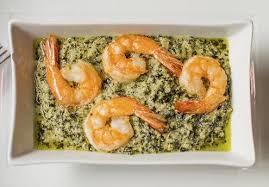
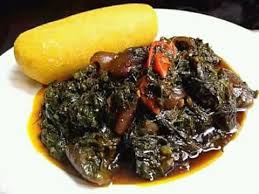
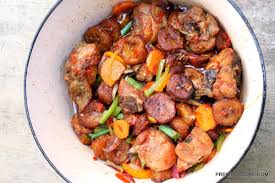

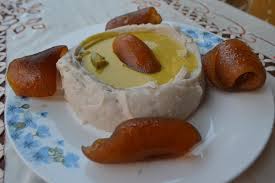

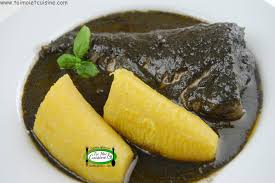
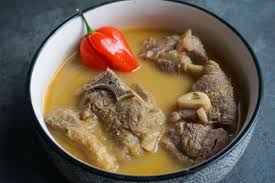
Interesting Facts
- Cameroon is home to over 250 ethnic groups, each with its own unique traditions and languages.
- The country has a rich biodiversity, with several national parks and UNESCO World Heritage Sites.
- Mount Cameroon is an active volcano, known for its stunning hiking trails and annual race.
- Cameroon has both French and English as official languages, reflecting its colonial history.
- The Dja Faunal Reserve is a UNESCO World Heritage Site, protecting endangered species and unique ecosystems.
- The country’s currency is the Central African CFA franc (XAF), shared by several Central African countries.
- The national football team, known as the Indomitable Lions, has won the Africa Cup of Nations five times.
- Cameroon is known for its vibrant music scene, with genres like Makossa and Bikutsi gaining international recognition.
- The country has a tropical climate, with diverse ecosystems ranging from coastal mangroves to savannas.
- Cameroon was once part of German colonial territory before being divided between British and French rule.
Conclusion
Cameroon is a captivating destination that offers a unique blend of cultural richness, stunning landscapes, and warm hospitality. From the majestic peaks of Mount Cameroon to the vibrant streets of Yaoundé and Douala, each region boasts its own charm and character. With its diverse traditions, delicious cuisine, and lively festivals, Cameroon promises an unforgettable experience for travelers seeking adventure and cultural immersion. Whether you’re hiking through the lush rainforests of the Dja Faunal Reserve or savoring the flavors of traditional dishes, Cameroon invites you to explore its treasures and connect with its people.
let’s enjoy few years on earth with peace and happiness….✍🏼🙏

